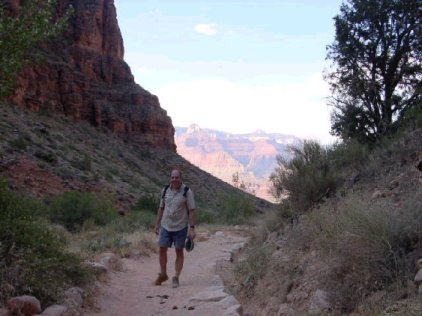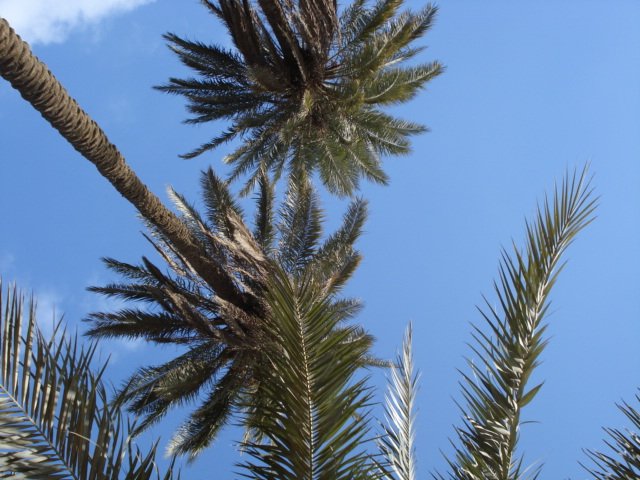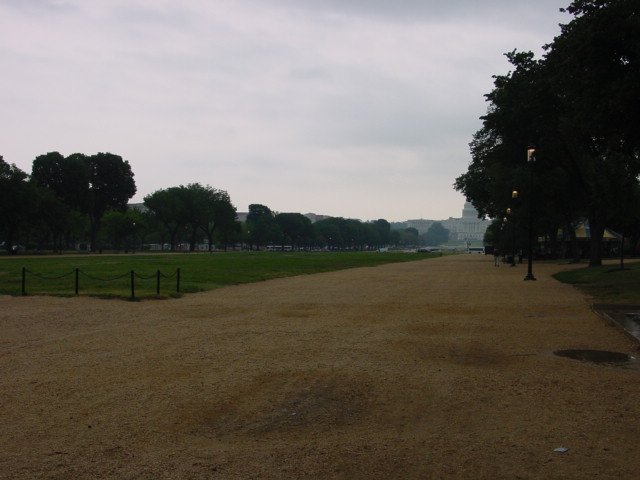
The picture is from my walk to the bottom of the Grand Canyon – and back up a few years ago. It was a long day and thinking of it reminds me that things take time and lots of forces working together over time create big results.
When thinking about my role as ePRT leader, many of the usual management descriptions spring to mind such as coach, mentor and various sports or military analogies. Of course routine management of staff and resources takes up the bulk of the time. They are necessary, but often not the most value-adding activiites. On further consideration a less common analogy came to mind, one that probably adds the most value for the leader of a diverse team – reporter.
All the members of my team are experts. They know lots of things I don’t know and they often work where I cannot watch them, far away from Al Asad doing the things they are especially qualified to do. I have to trust them. It is impossible for me precisely to direct their work; more correctly it is impossible for me to direct them closely and expect good results, because (see above) they have skills and talents that are beyond my own. I need to take advantage of their skills, imagination, innovation and initiative while still guiding them toward our common goals so that each member can best contribute his/her skills to achieve those goals. Synergy is the tired old word, but it applies well to teamwork like ours. It applies even more when you consider that our skills and actions are only part of the total effort that involves so many other USG & military officers, contractors and – most important – our Iraqi friends and allies. It is much more appropriate to think in terms of influence rather than authority.
Just keeping up with all the good work they are doing and helping other do is almost a full time job. I found the best way to get this done is to use the skills of a journalist/analyst rather than a boss or supervisor. When team members return from sojourns in the field, I sit down with them and listen to their experiences, concerns and aspirations. I put myself in the mind set of a reporter and ask myself how I would explain this in a written article and then how I might answer questions if I was on one of the panels on a Sunday morning news program. Of course, listening is good leadership and understanding is essential to right action, but this is only the first step. My responsibility goes beyond asking questions and reporting. My job is to coordinate and guide the whole team and create synergies among team members. If I were to plot my team members’ activities on a Venn diagram, I add the most value when I can find and accentuate the places of overlap. Let me illustrate with an example.In the Hadithah region, I asked my USDA expert to partner with local officials to enhance plans for restoring land productivity in ways that were both ecologically and economically sustainable. At the same time, our governance expert worked on issues of land tenure. Cloudy land title is one of the biggest impediments to responsible development in the region. (Little things like a small QRF grant to organize the records office can leverage into much bigger results.) All the while our business development team member developed and implemented a plan for an equipment rental operation as our city planning expert delivered GPS mapping software to expedite forecasting and platting of communication networks and communities. Each of these tasks was worth doing on its own merits, but when coordinated the total accomplishment will be greater than the sum of its parts. That is what I do when I am successful and I think the talent for doing this is the key skill for PRT leaders.
Lao Tzu says about leadership that when the best leaders have accomplished their purposes, the people say that they have done it by themselves. That is good team advice. I also find that thinking about my job and writing it for others who are unfamiliar with the details helps me understand my own plans. Thanks for listening. Comments are welcome. Any of my team reading this – we can talk.


